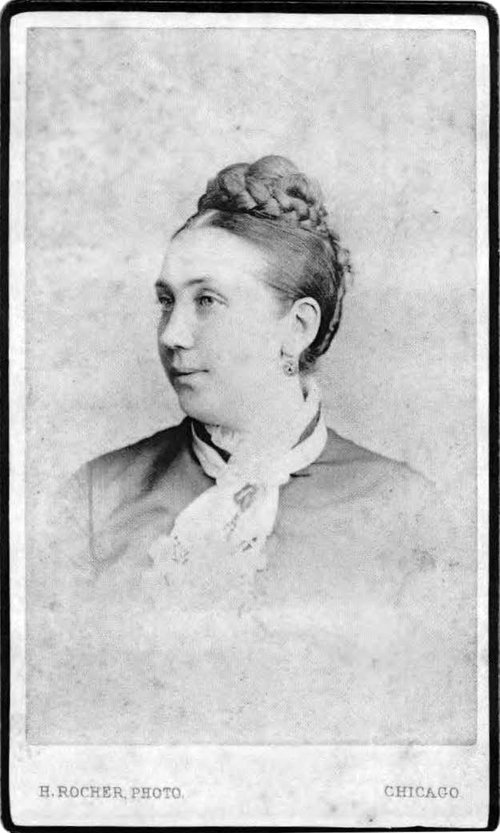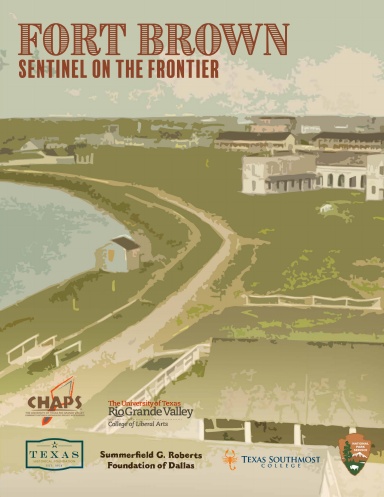

This research guide is intended to provide introductory information on the historical significance of Fort Brown located in Brownsville, Texas. The guide provides links to useful primary and secondary sources from the UTRGV University Library Special Collections as well as information about external resources.
Before it was known as Fort Brown, Fort Texas was established as a U.S. Army post in 1846. It was an earthwork fortress shaped like a six-sided star with 9' high and 15' wide walls and encircled by a moat. The fort was renamed for Major Jacob Brown (1789-1846), the commander of the U.S. 7th Infantry who was mortally wounded in the Siege of Fort Texas during the Mexican-American War.
The post played an important role during the U.S. Civil War when it was occupied first by Confederate Col. Rip Ford (1861-1863) and later by Union Gen. Nathaniel Banks (1863-1864) before the Confederacy once again seized control until the end of the war. Following the Civil War, Fort Brown was established as a permanent military base for the U.S. Army along the nation's southern border.
Fort Brown played a prominent role in military and border history due to its strategic location. It was decommissioned by the Army in 1946 and acquired by the City of Brownsville and Texas Southmost College in 1948.
The Consolidated Appropriations Act of 2023 authorized the addition of Fort Brown to Palo Alto Battlefield National Historical Park.

This digital collection consists of maps pertaining to Fort Brown and its evolution from a military installation to a higher education institution.

The Fort Brown Quartermaster's Ledger consists of two-page reports that were originally bound in a single volume. The reports describe specifications for buildings on the Fort Brown military installation. This includes information about the floor plans, building dimensions, construction materials, mechanicals, appliances, and any changes or updates made to the building over time.

Warren G. Purdy served as a clerk for the U.S. Army Quartermaster at Fort Brown in 1866. His young wife Acca L. (neé Colby) accompanied him and wrote several letters to her family during this brief period. Their letters provide a unique window into life in Brownsville and Matamoros at the war's end.
See also the Acca L. Purdy Correspondence Collection (1866) Digital Exhibit.

One in the series "Original souvenir albums of all American & Canadian cities & sceneries" published by W. H. Chatfield and Chisolm Brothers. Photo scrapbook contains:
General view of Brownsville -- Elizabeth St. south end -- Twelfth St. looking east -- Mexican Jacales -- Steamboat landing, Rio Grande River -- Rio Grande Railroad depot and repair shots -- Grammar school building -- Brothers college -- Convent school -- Corner of Market Square -- Episcopal church and rectory -- Presbyterian church -- Catholic cathedral -- City market and plaza -- Convent -- General view of Fort Brown -- Summer uniform -- Headquarters -- Cathedral and Custom house -- United States Consulate -- Headquarters of 4th Military Zone -- A corner of the plaza -- Street scene: Abasolo & 7th sts. -- Opera house -- Old Spanish church -- City market -- Ferries over Rio Grande and Custom offices -- County court house -- Water carts -- H. E. Woodhouse home, Thomas Carson home -- S. W. Brooks home -- Emilio C. Forto home -- William Kelly home -- View west from court house -- Antonio Yznaga residence -- Residence of Robert Dalzell -- View from north court house.

An article appearing in Gulf Coast Line Magazine in 1908. "When the Federal Government established the South Texas Garden at old Fort Brown and placed Professor E. C. Green in charge thereof, it did a great service for the farmers of Southwest Texas, and especially the farmers residing in those sections designated as the Lower Rio Grande. For the South Texas Garden is an experimental farm under the charge of an experienced pomologist, and from both the farmers are learning lessons and receiving information that will be of great value to them in the pursuit of their avocations as tillers of the soil. Fifty acres of ground in old Fort Brown have been allotted to the South Texas Garden for the present, and Professor Green is assisted in his work by an office clerk, an entomologist, three gardeners and five laborers. The first work done at the Garden was on June 1, 1907, and this consisted in clearing off the brush, constructing irrigating ditches and getting the land ready for planting in the fall, the first planting taking place on November 19 last..."

This scrapbook contains photographs of scenes around Brownsville, San Benito, and Point Isabel. Photographs depict soldiers' daily living while in camp or in the march during the Mexican Border War. The photographs were taken during the summer and fall of 1916.

This collection contains aerial photographs of Fort Brown throughout the decades.

Discover the rich history that Fort Brown has to offer. Take a self-guided walking tour by downloading the brochure.

The Brownsville Affair of 1906 was previously referred to as the "Brownsville Raid". Due to the recent reexamination of this historic event, and many like it in American history, the terms once associated with these events have changed due to restoration efforts over time. This does not mean that publications using previous titles should be considered undervalued. In fact, The Brownsville Raid, by John Weaver, set the foundation for revitalization efforts that challenged previous interpretations and is still largely cited by historians today.
The research guides compiled by UTRGV staff and students are intended to assist patrons who are embarking upon new research endeavors. Our goal is to expand their knowledge of the types of resources available on a given topic, including books, archival materials, and websites. In so doing, our compilers have taken care to include collections, digital items, and resources that may be accessed not only through UTRGV but also via other institutions, repositories, and websites.
We wholeheartedly respect the research interests of others. Therefore, please contact us if you wish to submit a resource for consideration, or if you have a question about or an issue with a specific cited resource.
 Fort Brown: Sentinel on the Frontier
by
As the primary U.S. military establishment at the mouth of the Rio Grande, Fort Brown became a major prize for both sides during the Civil War. Originally named Fort Texas and later renamed in honor of Major Jacob Brown, one of the first casualties in the Mexican American War, the fort was built by General Zachary Taylor in 1846, making it the first major U.S. military post built along the Rio Grande. In February 1861, Union General David Twiggs—a southern sympathizer—agreed to surrender all military sites in Texas to the Confederacy. During most of the Civil War, Confederate troops at Fort Brown served as guardians of the prosperous cotton trade to Matamoros. After May 1865, Fort Brown was re-occupied by the U.S. Army, including U.S. Colored Troops, and resumed its role as a guardian of the border. This catalog is a product of a class taught by the CHAPS Program faculty on Public History and was designed to give our students experience in developing a traveling museum exhibit for many to enjoy.
Fort Brown: Sentinel on the Frontier
by
As the primary U.S. military establishment at the mouth of the Rio Grande, Fort Brown became a major prize for both sides during the Civil War. Originally named Fort Texas and later renamed in honor of Major Jacob Brown, one of the first casualties in the Mexican American War, the fort was built by General Zachary Taylor in 1846, making it the first major U.S. military post built along the Rio Grande. In February 1861, Union General David Twiggs—a southern sympathizer—agreed to surrender all military sites in Texas to the Confederacy. During most of the Civil War, Confederate troops at Fort Brown served as guardians of the prosperous cotton trade to Matamoros. After May 1865, Fort Brown was re-occupied by the U.S. Army, including U.S. Colored Troops, and resumed its role as a guardian of the border. This catalog is a product of a class taught by the CHAPS Program faculty on Public History and was designed to give our students experience in developing a traveling museum exhibit for many to enjoy.
Appointments are recommended for most new researchers. Our team is available in Brownsville and Edinburg to assist you with identifying resources.